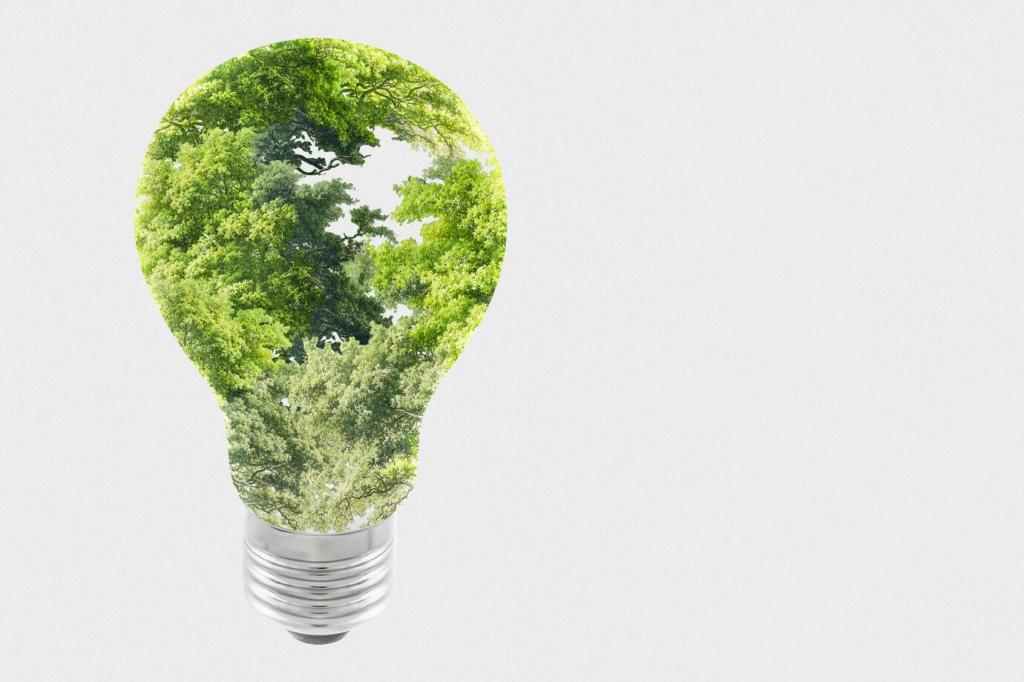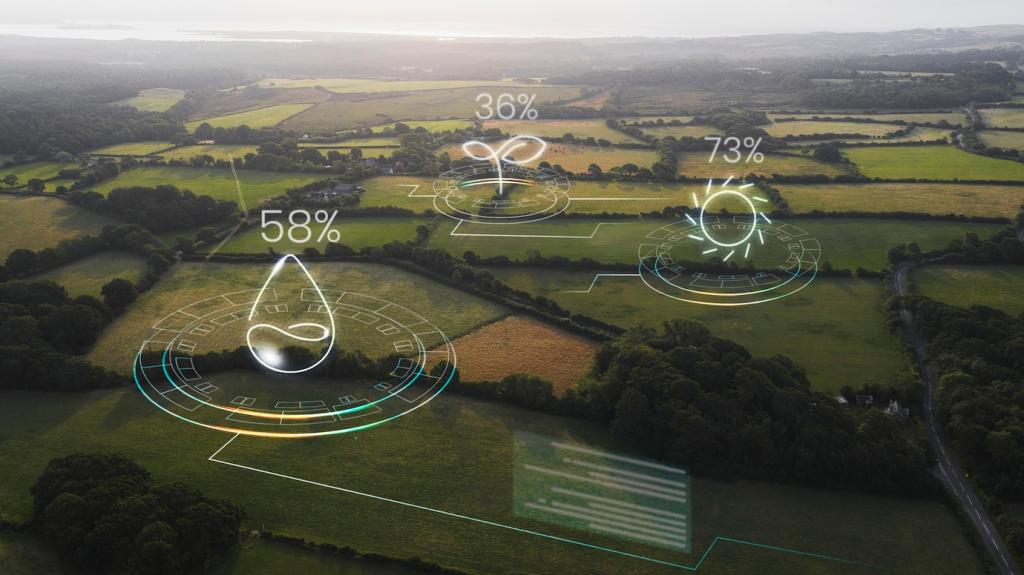Discover the dynamic world of sustainable innovations shaping modern interior design. As the demand for eco-conscious spaces rises, designers are reimagining interiors through forward-thinking strategies that blend style, comfort, and environmental stewardship. From novel materials to holistic design philosophies, this page explores how creative solutions are transforming interiors, preserving resources, and fostering healthier habitats for all.
Emerging Eco-Friendly Materials
Recycled and Reclaimed Elements
Innovative use of recycled and reclaimed materials is reshaping interior design. Designers incorporate items like reclaimed wood, recycled glass, and repurposed metals to produce bespoke furnishings and finishes. This approach minimizes waste, conserves resources, and instills spaces with character and authenticity. The process often involves artisanal craftsmanship, breathing new life into materials that would otherwise end up in landfills. Recycled elements can be transformed into anything from eye-catching countertops to dynamic wall treatments, exemplifying sustainability without sacrificing style. By bridging environmental responsibility with creativity, recycled materials have evolved into core components of the modern design vocabulary, catering to both eco-conscious clients and admirers of unique, storied interiors.
Plant-Based and Rapidly Renewable Resources
Increasingly, designers opt for plant-based materials and rapidly renewable resources to create interiors that tread lightly on the earth. Bamboo, cork, and hemp are leading examples—these materials mature quickly, require minimal chemical treatment, and regenerate with low environmental impact. Incorporating them translates to flooring, wall coverings, and soft textiles that are both resilient and stylish. The aesthetic versatility of plant-based options allows for seamless integration into a range of design schemes, from minimalist to eclectic. Moreover, these resources offer impressive durability and naturally hypoallergenic properties, making them practical choices for busy, health-conscious households. Their rapid growth and ease of harvest ensure the supply remains sustainable, supporting global efforts toward resource conservation.
Low-Impact Finishes and Paints
Low-impact finishes and non-toxic paints are revolutionizing how modern interiors support well-being. Traditional finishes often contain volatile organic compounds (VOCs) that contribute to indoor air pollution and pose health risks. As awareness grows, designers are sourcing paints and coatings derived from natural minerals, water, or plant oils. These alternatives minimize pollution and foster healthier indoor air quality. A surge in product options now offers an extensive palette of colors and sheens, so designers don’t have to compromise on visual outcomes. In addition, new formulations deliver performance benefits such as greater washability, UV resistance, and longevity, aligning sustainability with everyday practicality. By specifying low-impact finishes, designers help cultivate living environments where beauty and health go hand in hand.
Energy-Efficient Lighting Strategies
LED Technology and Beyond
Dominating modern sustainable lighting, LED technology significantly reduces energy use and associated emissions. LEDs consume a fraction of the power required by incandescent bulbs and have a vastly longer lifespan, resulting in fewer replacements and less waste. Additionally, LED options offer rich color temperature ranges, superior brightness levels, and compatibility with smart systems. Innovations continue to advance with state-of-the-art organic LEDs (OLEDs) and tunable white lighting, enabling designers to craft tailored atmospheres for every room. Beyond efficiency, these lighting solutions minimize heat output, reducing cooling demands. By prioritizing cutting-edge lighting technologies, designers chart a course toward interiors that are both luminous and environmentally aligned.
Integrated Daylighting Systems
Harnessing natural daylight is a hallmark of sustainable interior design. Integrated daylighting systems use strategic window placement, skylights, and light shelves to channel sunlight deep into living spaces. This approach reduces dependence on artificial lighting, thereby conserving energy while imparting uplifting, dynamic environments. Modern solutions seamlessly blend architectural features with advanced glazing to filter UV rays and prevent heat loss. Designers analyze solar paths and room orientation to optimize light levels throughout the day, promoting occupant comfort and circadian well-being. The thoughtful interplay of glass, reflective surfaces, and space planning merges form and function, resulting in interiors that are both inviting and energy-wise.
Smart Lighting Controls
Smart lighting systems add another dimension to sustainable interior design. Automated controls—such as motion sensors, occupancy sensors, and programmable dimmers—allow lights to respond in real time to activity and daylight availability. This precision fosters remarkable energy savings by ensuring lights are only on when needed and at optimal brightness for each situation. Integration with broader home automation platforms enables users to monitor and adjust lighting via smartphones or voice-activated assistants, enhancing convenience and customization. The result is an adaptable, energy-efficient environment where technology actively supports sustainability goals. By embedding intelligence into lighting, interiors become more attuned to both human needs and ecological imperatives.
Responsible Furniture Design
Modular and adaptable furniture solutions exemplify sustainability through flexibility and longevity. These pieces can be reconfigured, expanded, or repurposed to accommodate changing needs, reducing the likelihood of disposal when lifestyles shift. Designers meticulously engineer items such as sectional sofas, extensible tables, and transformable storage units to fit various spaces and functions. As a result, occupants avoid the need to frequently replace furnishings, thereby conserving materials and energy. The versatility of modular pieces also supports urban living, where maximizing space is crucial. By focusing on adaptability, designers create interiors that remain relevant and functional over time, embodying the essence of lasting sustainability.
Sourcing materials transparently and as locally as possible marks a significant shift in furniture design philosophy. Ethically sourced timber, fair-trade textiles, and low-impact production methods all contribute to furniture that benefits both people and planet. Designers collaborate with local artisans and manufacturers to craft pieces with a reduced carbon footprint, fostering community resilience and supporting regional economies. Local sourcing not only ensures traceability and responsible harvesting but also imbues furniture with a sense of place and cultural authenticity. By prioritizing the integrity of their supply chains, designers deliver furniture that stands as a testament to ethical practices and meaningful aesthetics.
Circular design principles are revolutionizing furniture production and usability. Instead of a linear model—where products end up in landfills—circular strategies involve designing for durability, repairability, and eventual recyclability. Furniture brands committed to this approach use components that can be disassembled and upgraded, prolonging usefulness and simplifying end-of-life recycling. Take-back programs and refurbishment services further extend product lifespans. This paradigm shift reduces waste, supports resource regeneration, and aligns brand values with consumer expectations. As closed-loop furniture becomes more prevalent, it transforms the market into a space where sustainability is not an afterthought but a foundational principle.

Previous
Next
Innovative Use of Nature
Living walls, also known as vertical gardens, have redefined what it means to merge architecture with nature. These installations integrate living plants directly into the built environment, offering aesthetics, air purification, and acoustic benefits. Designers select plant species that thrive in indoor conditions and integrate precise irrigation systems, ensuring minimal water waste. The result is an ever-changing canvas that transforms blank walls into vibrant ecosystems. Living installations foster a human connection with nature, proven to reduce stress and boost mood. Their ability to filter toxins and increase humidity further enhances indoor environmental quality, making them a holistic solution for sustainable, health-focused interiors.
Modern interiors increasingly use high-efficiency water fixtures to curtail usage without compromising comfort. Products such as low-flow faucets, dual-flush toilets, and water-saving showerheads are engineered to achieve optimal performance with minimal consumption. Designers specify these fixtures for bathrooms, kitchens, and utility spaces, emphasizing both design coherence and resource sensitivity. Many options now come in striking finishes and sleek forms, dispelling the myth that sustainability requires aesthetic compromise. High-efficiency fixtures form the backbone of any water-smart interior, providing measurable savings and supporting broader environmental goals.

Waste Reduction in Interior Design
Upcycling and Creative Reuse
Upcycling in interior design breathes new life into discarded materials and objects, turning them into statement pieces or functional items. Instead of contributing to landfill waste, items like exhausted shipping pallets, glass bottles, or textile remnants are transformed into furniture, art, or accessories. The creative process behind upcycling often results in one-of-a-kind interiors, rich with texture and narrative. This dedication to resourcefulness celebrates human ingenuity while honoring sustainability. Upcycled elements prompt conversation and appreciation for the value inherent in what others might discard, reinforcing a culture where mindful consumption replaces disposability.


